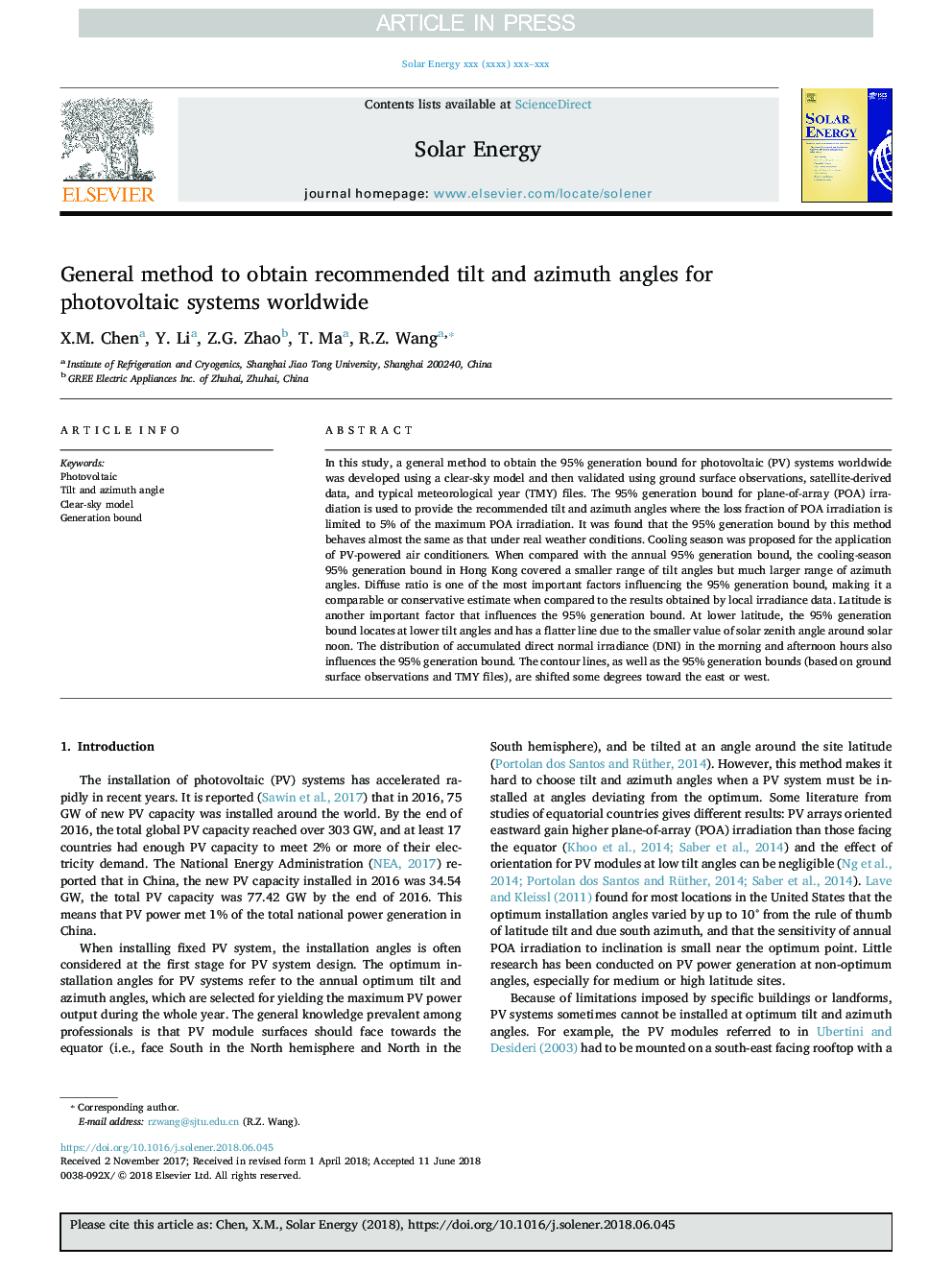| کد مقاله | کد نشریه | سال انتشار | مقاله انگلیسی | نسخه تمام متن |
|---|---|---|---|---|
| 11011407 | 1802889 | 2018 | 12 صفحه PDF | دانلود رایگان |
عنوان انگلیسی مقاله ISI
General method to obtain recommended tilt and azimuth angles for photovoltaic systems worldwide
ترجمه فارسی عنوان
روش عمومی برای بدست آوردن زاویه های شیب و زاویه ای توصیه شده برای سیستم های فتوولتائیک در سراسر جهان
دانلود مقاله + سفارش ترجمه
دانلود مقاله ISI انگلیسی
رایگان برای ایرانیان
کلمات کلیدی
فتوولتائیک، زاویه شیب و زاویه، مدل آسمان پاک، نسل مرزی،
موضوعات مرتبط
مهندسی و علوم پایه
مهندسی انرژی
انرژی های تجدید پذیر، توسعه پایدار و محیط زیست
چکیده انگلیسی
In this study, a general method to obtain the 95% generation bound for photovoltaic (PV) systems worldwide was developed using a clear-sky model and then validated using ground surface observations, satellite-derived data, and typical meteorological year (TMY) files. The 95% generation bound for plane-of-array (POA) irradiation is used to provide the recommended tilt and azimuth angles where the loss fraction of POA irradiation is limited to 5% of the maximum POA irradiation. It was found that the 95% generation bound by this method behaves almost the same as that under real weather conditions. Cooling season was proposed for the application of PV-powered air conditioners. When compared with the annual 95% generation bound, the cooling-season 95% generation bound in Hong Kong covered a smaller range of tilt angles but much larger range of azimuth angles. Diffuse ratio is one of the most important factors influencing the 95% generation bound, making it a comparable or conservative estimate when compared to the results obtained by local irradiance data. Latitude is another important factor that influences the 95% generation bound. At lower latitude, the 95% generation bound locates at lower tilt angles and has a flatter line due to the smaller value of solar zenith angle around solar noon. The distribution of accumulated direct normal irradiance (DNI) in the morning and afternoon hours also influences the 95% generation bound. The contour lines, as well as the 95% generation bounds (based on ground surface observations and TMY files), are shifted some degrees toward the east or west.
ناشر
Database: Elsevier - ScienceDirect (ساینس دایرکت)
Journal: Solar Energy - Volume 172, Part 1, 15 September 2018, Pages 46-57
Journal: Solar Energy - Volume 172, Part 1, 15 September 2018, Pages 46-57
نویسندگان
X.M. Chen, Y. Li, Z.G. Zhao, T. Ma, R.Z. Wang,
